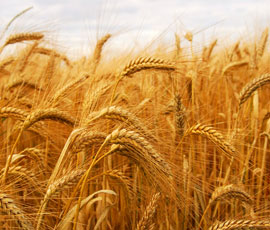Rare root knot nematode damage found in UK wheat crop

Farmers Weekly Farmer Focus writer Robert Law recently noted a visit from the pest root knot nematode in his early sown wheat. It is a pest rarely seen on these shores and NIAB TAG entomologist Jane Thomas answers some questions on the pest
What is root knot nematode?Root knot nematode belongs to the Meloidogyne genus of nematodes. The major symptom on the roots is the formation of galls, which are caused by the enlargement of plant cells when they react to the nematode feeding in the roots. In severe attacks, the roots can become so distorted that they resemble a tangled mass, hence root knot nematode.
Females inside the root produce egg sacs on the outside. The eggs then hatch producing more small nematode juveniles, which are released into the soil and migrate to more roots or further infect the original root.
Where has it come from?Several species of Meloidogyne are known in the UK and occur in our soils. Significant damage has been noted, but is quite rare in arable crops.
Is it notifiable?The species which has occurred in wheat this year is not notifiable.
How does its life cycle differ from other nematodes?It does not form external cysts like Heterodera species such as cereal cyst nematode or beet cyst nematode, which are long-term survival structures. It also does not persist long term in the soil like a free living nematode species. Inter-crop survival is by intact egg sacs, which hatch when temperatures are suitable.
Which crops does it affect?Cereals, brassica and legume species are affected. Choice of non-host crops is limited, but sugar beet and forage maize are possibilities.
Are there particular soil types that it prefers?Generally lighter, sandier soils, but the nematodes are not limited to these and can be found in heavier soils as well.
What can be done to prevent it?Using a non-host crop is really the only option, such as sugar beet and maize.
Are there any controls once it has infested your land?There are no specific controls. Cleaning machinery after cultivations will reduce field-to-field spread. The warm temperatures last autumn may have led to higher levels of egg hatch than would normally be experienced.

